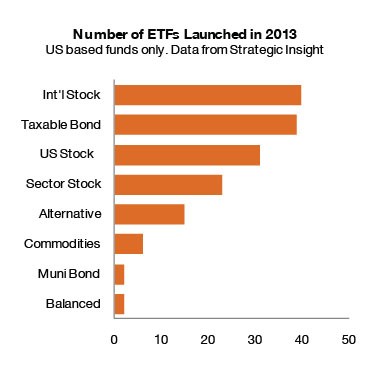Schwab introduces ETFbased 401(K) program
Post on: 25 Май, 2015 No Comment

Schwab introduces ETF-based 401(k) program
Schwab has become the first major firm to launch a full-service 401(k) program based on low-cost exchange-traded funds (ETFs).
Steve Anderson, Executive Vice President, Schwab Retirement Plan Services.
Steve Anderson, head of Schwab Retirement Plan Services, estimates a 401(k) plan – essentially a US tax-qualified, defined-contribution pension account – using index exchange-traded funds can reduce investment expenses by more than 90 percent compared to a typical 401(k) plan that primarily uses actively managed mutual funds, and by more than 30 percent compared to a 401(k) plan that uses index mutual funds.
“We believe workers can and should get more value from their 401(k)s. In 2012, we successfully launched Schwab Index Advantage, designed to help workers better prepare for retirement using low-cost index mutual funds and personalized advice. We are now launching an additional version of Schwab Index Advantage with the goal of further driving down investment costs by using low-cost ETFs,” said Anderson.
Several employers have already expressed strong interest in becoming first adopters of the ETF version of Schwab Index Advantage. Given the typical 6-12 month sales and implementation cycle in the 401(k) industry, the firm anticipates clients will be offering the service to their employees later this year.
ETFs offer a number of benefits to investors, including low investment costs, a broad range of asset classes, transparency and timeliness of trades. Many solutions on the market today unitize shares, batch trades, trade only once a day at a single price, or require individuals to open a self-directed brokerage account to access ETFs.
“Using a patent-pending process, Schwab Index Advantage is the first 401(k) program that fully integrates ETFs as core investments within the plan, including commission-free intraday investing along with the ability to process partial share interests. We believe a truly effective offering requires the ability to invest in and receive allocations of both full and partial shares of ETFs when the market is open, and that’s what we’ve built. Other 401(k) offerings that we’ve seen take a less comprehensive approach to including ETFs and also tend to serve smaller plans,” added Anderson.
For a growing number of individuals and institutional investors, ETFs are being embraced as a mainstay of a diversified portfolio. Assets in ETFs have grown from $66 billion in 2000 to more than $1.6 trillion at the end of 2013, according to the Investment Company Institute.

“The extraordinary growth of ETFs assets is undeniable and reflects their ability to meet investor needs. The notion by some industry commentators that these benefits should not be available to 401(k) participants reminds me of the proponents of gas lighting who, 100 years ago, argued that electricity was dangerous and unnecessary,” observed Anderson.
“Despite the obvious benefits of ETFs, mutual fund companies that dominate the 401(k) industry have largely ignored them – simply because these companies lack either the capabilities or the will to effectively accommodate ETFs in the retirement plans they offer. Others in the industry suggest that offering ETFs to 401(k) participants will lead to over-active trading, an argument not supported by the facts. We heard the same false argument 25 years ago when the industry began updating participant 401(k) balances on a daily basis, instead of quarterly,” he added.
The Schwab program allows employers and their retirement plan consultants to build a diversified investment fund lineup, choosing from roughly 80 low-cost index ETFs. The funds represent more than 25 asset categories from 11 major providers including Charles Schwab. ETF Securities. First Trust. Guggenheim. PowerShares. iShares. Pimco. SPDR. Market Vectors. Vanguard and United States Commodity Funds .
You may also be interested in:














